This new oil-age helped to transform Qatar's economy from its reliance on traditional marine oriented activities such as pearling and fishing, together with some small scale farming into a modern and much more diversified industrial economy. The flow of oil revenues created a more affluent society and one in which rapid increases in living standards, education and health care services was possible. Along with this came a significant population increase, from an estimated 30,000 in the 1950's to, according to recent census figures, more than half a million people today.
Throughout this period of rapid growth, which commenced in the late 1950s, Qatar has made great strides towards establishing its modern status and independent character. The country's impressive modernisation programme is continuing under its present leader, HH Sheikh Hamad bin Khalifa Al Thani, who has expressed a special interest in consolidating the valuable steps that have already been taken within the framework of its Arab and Islamic identity. Plans are now in place to build a modern, strong and promising state which can continue to play a worthwhile role, regionally, within the Arab world as a whole, and within the global environment.
Government
The provisional modified
constitution stipulates that Qatar is an independent and sovereign Arab
country. Islam is the official religion and the main source of
legislation, and the system is democratic. Arabic is the official language
and its people are Arabs.
In accordance which its legal constitution, the state supervises and
guides the national economy for the welfare of the country and its people.
Private property, capital and labour are the main pillars of the country's
social structure organised by law. The state guarantees free economic
activity provided that it does not conflict with public interest.
The state also guarantees freedom of residence, a free press and respect
for personal property. Qatari citizens are assured equal rights and
obligations and its responsibility of the state to provide public jobs.
These and other rights are defined within the country's constitution which
stipulates the following administrative structure for the government.
The Emir is the Head of State. The system of government is hereditary
within the Al Thani Family. Article 17 of the provisional modified
constitution stipulates the the Emir shall issue laws according to the
proposal of the cabinet and after consultation with the Shura Council
(Advisory Council).
The Cabinet, comprising a Council of Ministers, is the highest executive
body, and is presided over by HH the Prime Minister.
The Ministers are, at present, thirteen in number, with responsibilities
divided as follows:
- Ministry of Defence.
- Ministry of Interior.
- Ministry of Finance, Economy and Trade.
- Ministry of Foreign Affairs.
- Ministry of Civil Service and Housing Affairs.
- Ministry of Communications and Transport.
- Ministry of Electricity and Water.
- Ministry of Energy and Industry.
- Ministry of Municipality and Agricultural Affairs.
- Ministry of Education and Higher Education.
- Ministry of Public Health.
- Ministry of Endowments and Islamic Affairs.
- Ministry of Justice.
The Advisory Council, the first democratic government institution
established since independence in 1972, has proved to be successful and is
considered to be suitable to the country's political and social
circumstances. It has received strong support from HH The Emir Sheikh
Hamad bin Khalifa Al Thani who holds regular consultations with the
Advisory Council and takes into considerations its recommendations on
different issues. In addition the cabinet ministers attend Advisory
Council sessions and committees, providing an opportunity for constructive
exchange of views and for the ministers to respond to queries raised by
council members.
The Country
Qatar generally consists of
low-lying naturally arid land with exception of some scattered limestone
outcrops at the Dukhan area which is 40 metes above sea level at the
western side of the country, the rocky area around Fuwairat in the north,
and some dramatic sand-dunes in the south where the towering hills of sand
rise almost abruptly from the desert plain.
The coastline is heavily indented in places, creating a series of bays,
beaches and natural harbours or khors. Where the water-table come close to
the surface, seasonal pools from and a more fertile belt exists towards
the north and within the centre of the country, permitting both natural
vegetation and agricultural development. The latter industry, aided by
modern technology and significant investment, has made considerable
strides in recent years helping to achieve the country's goal of
self-sufficiency in food production.
History
Artefacts discovered by
Danish, British and French archaeological teams in 1965, 1973 and 1976
consecutively, revealed that Qatar has been inhabited by Man since the
fourth millennium BC. Excavations have also shown that the Ubaid culture
in Mesopotamia extended to the Qatar peninsula. During the fifth century
BC., the Greek historian Herodotus wrote that the Kena'an tribes, who were
well known for their navigational skills and marine trading activities,
were the first inhabitants of Qatar. The Greek geographer Ptolemy, in his
map of the Arab World, records the name of Qatara, which is believed to
have referred to the famous Qatari town of Al Zubarah, which was one of
the most important commercial sea ports in the area.
In the seventh century AD Qatar embraced Islam during the era of its king
Al Munthir bin Sawi Al Tameemi. Historical Islamic texts describe the
Qatari people's navigational skills, and their participation in the
preparation of the first Islamic navy for Jihad under the leadership of
Abu Ala'a Al Hadhrami. Meanwhile, Arab historians and travellers also
admired the Qatari poet and knight' Qatari ibn al Fuja'h' for his bravery
and steadfastness.
The Arab geographer Yaqoot Al Hamawi, in his book Muja'm al Buldan,
praised the high status acquired by Qatar in its early manufacture of
textiles as well as for its flint arrow-head industry which is called al
Rimah al Khatiyah.
During the Abbasid era, in the fourteenth century AD, Qatar experienced a
period of economic growth as a result of increased demand for pearls from
the Khalifate in Baghdad. Evidence of this period may be found at the
Murwab Fort, on the western coast of the country, which reflects the
Abbasid style of architecture.
An alliance with the Turks, undertaken in the sixteenth century in order
to expel Portugueuse from the region, resulted in Qatar coming under
Ottoman influence for more than 400 years, albeit that actual authority
was vested in local Arab tribal sheikhs. Following the outbreak of World
War I, Qatar signed a protection treaty with Britain in 1916, but the
British influence was influenced to some administrative matters.
The Al Thani royal family, who belong to the Tameem tribe from Modhar bin
Nizar, and hail from a tribal gathering at Jabrin Oasis south of Najd,
moved to Qatar in the early eighteenth century. The family derived its
name from its mentor Thani bin Mohammed, father of Mohammed bin Thani, who
was the first Sheikh to practice real authority in the Qatar peninsula. HH
Sheikh Hamad bin Khalifa Al Thani became the Emir of Qatar on 27 June,
1995.
HH Sheikh Hamad is a strong supporter of the GCC and has stated that:
"We have always been keen to strengthen our affiliation to the GCC,
and adoption of its noble objectives. We have also worked with our
brothers the leaders of the member states to boost its march and activate
joint action within its framework.
Out of our Gulf motivated affiliation, we endeavour to support the
security and stability of our Gulf region, as Gulf security has become one
of the main concerns of its peoples."
Heritage and Culture
Culture and the arts have
received strong support in Qatar with the result that the country has an
active and vibrant artistic community. Support for this field has been
coordinated by the Department of Culture and Arts, which was established
in 1977, and which supports preservation and expression of Qatar's
heritage through collection of works, together with a full programme of
classification, study and analysis. The Department provides financial and
moral support to the Qatari folklore troupe, as well as documentation,
preservation and revival of handicrafts at the ancient Al Kut Fort. It
also sponsors intellectual works, the arts, theatrical and fine arts
movements.
In the early 1980's the theatrical movement witnessed new developments
culminating in the establishment of Qatar National Theatre in 1982, which
accommodates 550 seats and is equipped with state-of-the-art equipment.
As part of Qatar's focus on preservation of its traditional, historic and
ancient heritage and encouragement of its cultural attributes, the Ruler's
old fort residence in the heart of Doha, the country's capital city, was
converted into the headquarters for Qatar National Museum, and is now
under direction of the Department of Museums and Antiquities which
supervises all Qatar's museums and archaeological digs.
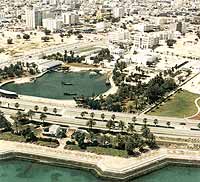
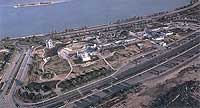
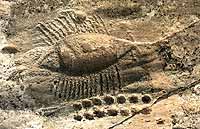
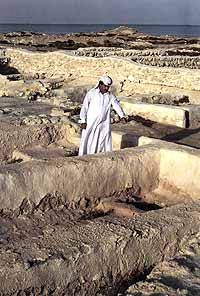
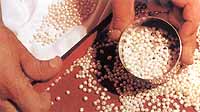
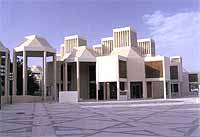
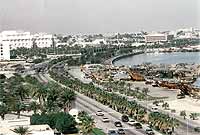
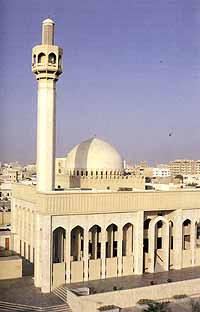
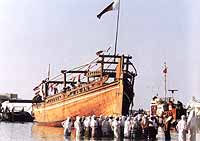
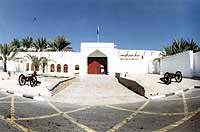
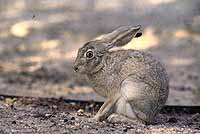
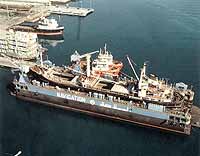
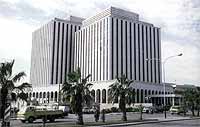
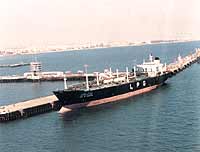
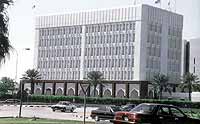
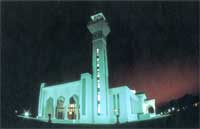
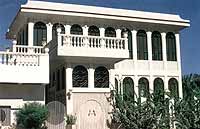
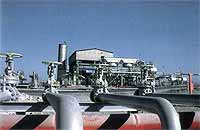
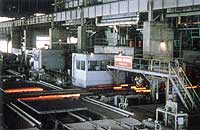
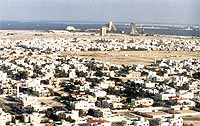
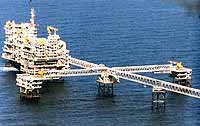
Qatar's cultural movement remains active, both at home and overseas, through a programme of exhibitions, performances, lectures and readings. Qatari Cultural Weeks, which have been organised in several Arab and foreign countries, provide a valuable focus and celebration of these efforts. Finally, cultural centres in associated with youth movements, also organise a range of cultural and artisitc activities.
Sites of Archaeological and Historical Interest
Qatar National Museum
Established in 1912, and first inhabited by Sheikh bin Abdullah bin Jasim
Al Thani, the ruler's residence was renovated and turned into a national
museum in 1975.
Al Kut Fort
Established in 1880, Al Kut Fort was renovated in 1978 and became a
handicraft exhibition centre.
Folklore Museum
Being the only model of its kind in Doha, and established in 1935, the
Folklore Museum is housed in a traditional building with a wind-tower (Badjeir)
open from all sides. It was renovated in 1982.
Al Jussasiyah
A series of low rocky outcrops, overlooking the north-eastern coast, which
bear hundreds of scattered engravings, some of which are thought to date
back to prehistory times.
Murawab Fort
Qatar's oldest fort, ddates back to the Abbasid era in the third century
AH and consists of a fort built on the remains of a even older one that
had been destroyed by fire.
Al Zubarah Fort
Established by local builders during the era of Sheikh Abdullah bin Jasim
Al Thani the, well preserved for its characterised by its high thick walls
and decorated tower.
Rukayat Fort
Dating back to the late 1800s, it is considered as a model of military
architecture in the Gulf.
Al Ghuwair Fort
A rectangular building, dating back to the early 1900s and characterised
by its thick clay and stone walls.
Borj Bazann Tower
Built in late nineteenth and early twentieth centuries, this is a unique
example of a surveillance towers in the region. It is characterised by its
height, large size and decorated edges.
Al Wajbah Fort
Approximately 19 kms west of Doha, the oldest extant tower in Qatar,
dating back to the nineteenth century, is the Al Wajbah fort. It was here
that a famous battle took place in which Qatari people, led by the then
ruler, Sheikh Qasim bin Mohammed Al Thani, defeated the Ottoman force in
1893.
House of Sheikh Mohammed
bin Qasim
Situated at Umm Salal Mohammed, approximately 18 kms north of Doha, this
is a fortified residence with two towers, serving both civil and defensive
purposes, and containing a number of interesting architectural and
decorative features.
Environment and Wildlife
The desert environment of
the Qatari peninsula varies from low plains in most parts of the country
to sand dunes in the south-eastern parts, with isolated sabkha, occasional
pools, and well established trees such as sidr (Ziziphus nummularia), harm
(Zygophyllum qatarense) and samr (Acacia tortilis) in the north.
Its strategic location in the Gulf region, on the course of many
north-south and east-west migrating birds, has made the Qatari Peninsula
of particular interest to ornithologists and a focal point for a wide
range of resident and visiting birdlife. Most of the recorded migrating
species stopover in Qatar during their spring and autumn passages from
Europe and Asia to Africa and Southern Arabia. The most famous Qatari bird
is the houbara bustard, while Socotra cormorants breed on coastal islands
and a wide variety of coastal birds may be seen throughout the year,
including povers, herons, terns and gulls. Inland, larks are a feature of
the local birdlife with hoopoe lark, crested lark and black-crowned finch
lark all present. In autumn the list swells to include swallows, swifts,
martins, warblers, shrikes, flycatchers, wheatears, wagtails and a number
of falcons including kestrel and harriers.
The Ministry of Municipality and Agricultural Affairs is paying special
attention to preservation of endangered indigenous and migrating birds. A
number of natural reserves has been established such as al-Wadhaihi in al-Shahaniyah,
the gazelle reserve in Ras Ashairij and the ibex reserve on Halool island.
Qatari are known for breeding camels, particularly in the southern area
around al-Kar'anah, al-A'reek and al-Qaseerah, Arab thoroughbred camel
races are held annually in Qatar.
Coastal marine resources include important sea-grass beds, vital as
shrimp, pearloyster and fish nurseries as well as providing feeding
grounds for endangered dugong and turtles.
Economic Development
The economic policy of
Qatar is based on diversification of national income resources through
expansion of industrial and agricultural production, in combination with
development of human resources. It also aims to provide a larger role to
the private sector. A key objective is to achieve a surplus in the balance
of payments through increasing exports and tightening budgetary control
through implementation of essential reforms in financial policy.
To this end, several joint stock companies have been established such as
the Qatar Manufacturing Company with a capital of QR 400 million and the
Qatari Water and Electricity Company at QR 1 billion. Incentives have also
been offered to the private sector in order to encourage investment in
industrial projects. Several laws have been passed in connection with this
programme, including Law 25 of 1990 which deals with organisation of
foreign capital investment in economic activity, and Law 11 of 1992
regarding income tax.
So far as the hydrocarbon industries are concerned, Qatar has been able to
maintain its oil production capacity, and oil production and exports have
continued at levels which meet the country's financial requirements and
development needs.
On a worldwide basis Qatar now ranks as the third largest holder of
natural gas reserves with estimates of more than 500 trillion cubic feet,
and proven reserves of 350 trillion cubic feet. The first phase of
development of al-Shamal gas field was opened in 1991 with a production
capacity of 6 million tonnes of liquified gas per year. The Ras Laffan
liquefied gas per year. The Ras Laffan liquified gas project, established
in 1993, aims to produce 10 million tonnes of liquefied gas from Al Shamal
gas field.
Qatar has also paid special attention to development of the industrial
sector and supported it through investment in manufacturing and quarrying
industries. Several incentives were offered to the private sector to
encourage investment in industry. A number of industries were established
depending on local raw materials such as petrochemicals, chemical
fertilisers, gas liquefaction, oil refining, cement, steel and iron.
The private sector has also established several factories for manufacture
of foodstuffs, textiles, garments, leather, wood, furniture, paper,
chemicals, rubber, plastic, aluminum, machines and equipment.
Particular attention is also paid to agricultural projects which aim at
securing self sufficiency. The Qatar government has provided strong
support to farmers and has encouraged local capital investment in this
sector. The number of registered farms has recently risen to 1131, with
891 active farms, while the overall agricultural area has reached 285,018
donum. Significant agricultural developments include the Mushabiyah Date
Palm Project, the Qatari Arab Company for Vegetable Production, the Qatari
Arab Company for Poultry Production and the diary and sheep project in Abu
Samrah area.
Qatar has modern well-equipped communication and telecommunications
networks, connecting it with the world through three earth-stations. Water
and electricity are provided free to all citizens and the Qatar government
remains committed to providing its citizens with a wide range of services
and amenities.
Social Development
Education is free in Qatar
at all stages, and students in government schools are provided with free
books and transportation, as well as financial incentives.
The standard of living in Qatar is considered one of the best worldwide,
thanks to the comprehensive social care programme established two decades
ago. Medical care and medicines are available for both citizens and
residents, and hospitals and medical centres are equipped with the latest
technological devices.
Qatari women participate actively in several social service fields and
have played an important role in women's social and charity activities.
They have also penetrated all fields of work.
Leisure time facilities are also provided for, including many local
attractions such as the zoo, Doha Corniche, al-Wakra and al-Khor parks as
well as the 'Alladin King' Fun City. Some might prefer to stroll along the
Fourairt, Dukhan and Khor al-A'deed beaches, as well as Sileen resort and
al-Nakheel island facilities.
The General Authority of Youth and Sports supervises 13 sport associations
and 14 clubs, of which nine are sport clubs, together with the Youth
Centres Society.
Qatar at a Glance
Location: The main land-mass of Qatar lies on a peninsula of low-lying land that protrudes from the mainland of eastern Arabia, into the mid-western waters of the Arabian Gulf. It has a number of associated reefs and islands.
Area: 11,437 square kilometers
Climate: Desert temperature climate, characterised by long, hot summers and short winters with low rainfall.
Population: 600,000 people
Independence: 3 September, 1971
Accession Day: 27 June
Religion: Islam
Language: Arabic
Capital: Doha
Important towns: Misaiaeed (the primary industrial city in Qatar), Al Khor, Al Wakrah, Dukhan, Al Shamal, Al Zubarah and Ras Laffan.
Time: 3 hours ahead of GMT.
Currency: Qatari Riyal (US$ 1 = 3.65 QR).
Banks: 14 banks of which 6 are national.
EGYPT - SYRIA - JORDAN